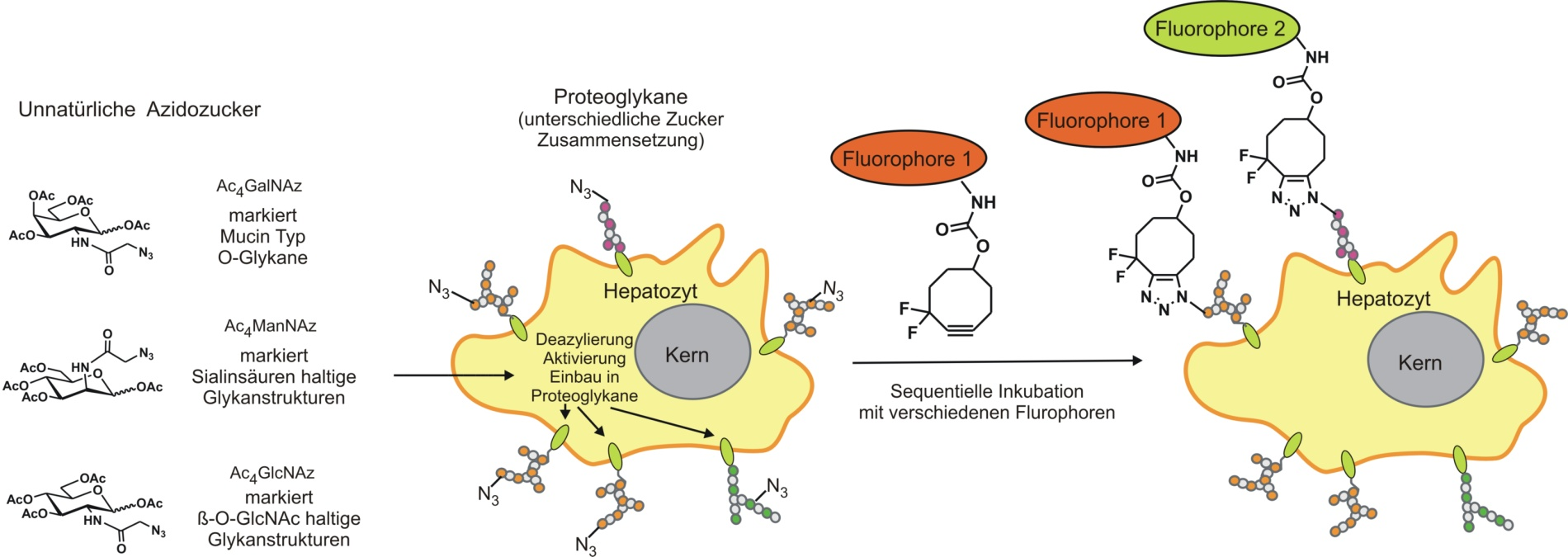Chemical Biology
Individual surface properties of cells are essential for the recognition of many vital factors. These factors include whole cells, proteins, growth factors and messenger substances as well as pathogens and drugs. The recognition of such factors is highly specific and individual for every cell type. It is often based on interactions with corresponding receptors on the extracellular site of the cell membrane. Besides the classical protein receptors protein- and lipid-bound glycostructures play an important role in cell recognition. Large oligosaccharide components of glycoconjugates form a sugar layer on the extracellular site of the plasma membrane, the so-called glycocalyx. These sugar structures can be labeled in the living cell by copper-free click-reactions. Therefore the cells are incubated with synthetic sugars that include azido groups. The synthetic sugar molecules are incorporated in the glycostructures of the cell and cyclooctynes that carry fluorophores can be bound to the azido groups selectively by a copper-free click-reaction. The development of sugar structures, e.g. during the embryonic development, can be monitored by reactions on a staggered basis of azido groups with cyclooctynes carrying different fluorophores.

